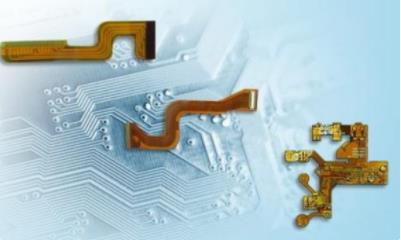FPC circuit board manufacturing process
The production process of flexible printed circuit board is basically similar to the production process of rigid board. For some operations, laminate flexibility requires a different device and a completely different treatment. Most flexible printed circuit boards use negative methods.
The production process of flexible printed circuit board is basically similar to the production process of rigid board. For some operations, laminate flexibility requires a different device and a completely different treatment. Most flexible printed circuit boards use negative methods. However, there are some difficulties in the machining and coaxial processing of flexible laminates, one of the main problems is the treatment of the substrate. Flexible materials are coils of different widths, so the delivery of flexible laminates during etching requires the use of rigid brackets.

In the production process, the processing and cleaning of flexible printed circuit is more important than the processing of rigid plate. Improper cleaning or out-of-order operation can lead to subsequent manufacturing failures due to the sensitivity of the materials used in flexible printed circuit board, which play an important role in the manufacturing process. The substrate is subject to mechanical pressures such as waxing, laminating and electroplating, and copper foil is also susceptible to hammering and dents, while the extension ensures maximum flexibility. Mechanical damage or work hardening of copper foil will reduce the flexible life of the circuit.
Typical flexible single-sided circuits need to be cleaned a minimum of three times during manufacturing, whereas multisubstrates need to be cleaned 3-6 times due to their complexity. In contrast, rigid multilayer printed circuit boards may require the same number of cleaning times, but the cleaning procedures are different and flexible materials need to be cleaned with more care. The spatial stability of the flexible material is affected even by the very light pressure of the cleaning process and can cause the panel to stretch in the Z or Y direction, depending on the bias of the pressure.
Chemical cleaning of flexible printed circuit board should pay attention to environmental protection. The cleaning process includes alkaline bath, thorough rinsing, microetching and final cleaning. Damage to film materials often occurs during panel mounting, during agitation in the tank, when shelves are removed or not mounted from the tank, and during surface tension in the clean tank.
Holes in flexible plates are usually punched, which leads to higher processing costs. Drilling is also possible, but this requires special adjustment of the drilling parameters to obtain unsmear-free hole walls. After drilling, the drilling dirt is removed in a water cleaner with ultrasonic agitation. Mass production of flexible boards has proved cheaper than rigid printed circuit boards. This is because flexible laminates enable manufacturers to produce circuits on a continuous basis, starting with the laminate coil and leading directly to the finished sheet. A continuous process diagram for fabricating a printed circuit board and etching a flexible printed circuit board, all production is done in a series of sequential machines. Screen printing may not be part of this continuous delivery process, causing disruptions in the online process.
In general, welding in flexible printed circuits is more important because of the limited thermal resistance of the substrate. Manual soldering requires sufficient experience, so wave soldering should be used if possible.
When welding flexible printed circuit, the following matters should be noted:
1) Because polyimide is hygroscopic, the circuit must be baked prior to welding (for 1h at 250°F).
2) When the pad is placed on a large conductor area, such as the grounding layer, power supply layer, or heat sink, reduce the heat dissipation area, as shown in Figure 12-16. This limits heat dissipation and makes welding easier.
3) When manually welding pins in dense places, try not to continuously weld adjacent pins and move welding back and forth to avoid local overheating.
Information on FPC design and fabrication can be obtained from several sources, however the best source of information is always the producer/supplier of processing materials and chemicals. Through the information provided by suppliers and the scientific experience of processing specialists, high quality flexible printed circuit board can be produced.